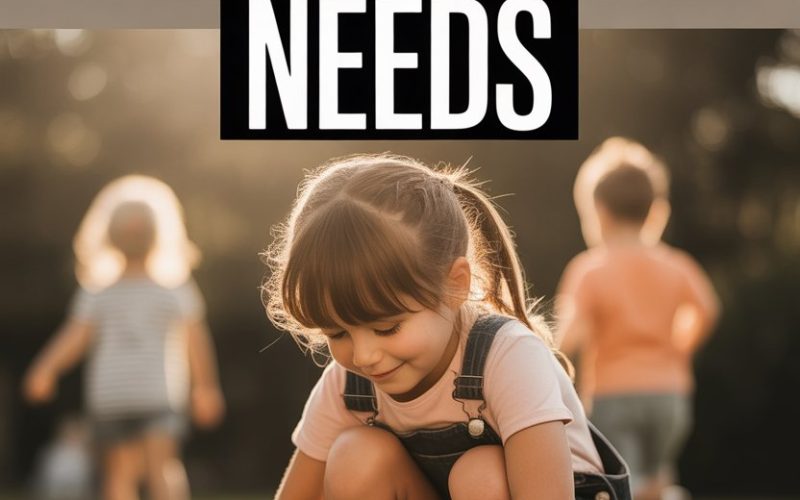If only the school drop-off line came with a warning: “Caution—your child may ask life’s biggest questions before you’ve had coffee.”
At seven, kids are curious, opinionated, and a bit sticky. They’re also ready for their most important leap yet: learning how to solve problems.
This isn’t about acing a quiz or tying shoelaces on the first go. This is about the every-single-day stuff: what to do when your snack spills, your friend won’t share the glitter glue, or you feel just a little lost at the birthday party.
Problem solving—being able to spot a snag and figure out what to do next—is the life skill that quietly powers everything else.
And trust me, it’s never too soon to raise a pint-sized problem solver.
Why Problem Solving Trumps All
Ask any teacher which children stand out, and it isn’t always the ones with the neatest handwriting or flashiest trainers. It’s the kid who pauses, thinks, and gives solutions a shot—before raising a hand for help.
Resilience, confidence, and flexibility all come marching after.
The American Academy of Pediatrics points out that problem-solving boosts a child’s emotional health, helps them avoid meltdowns, and even lays the groundwork for strong relationships later see research here.
Sounds great, but what does that even look like for a second grader?
It’s not about building the next iPhone or reciting the quadratic formula. Seven-year-olds are at the golden age for practicing small-but-mighty decisions—what to do when something’s tricky, unexpected, or just plain unfair.
Spotting Opportunities for Problem Solving
On a regular Tuesday, most children are handed about 17 chances to flex their problem-solving muscles before breakfast. (Give or take.)
Lost shoe. Sister’s in the bathroom—again. Cereal box appears empty, but is it really?
Each is a chance to practice, even if the solution is “ask nicely instead of shrieking.”
You don’t have to stage elaborate ‘teachable moments.’ The ordinary stuff is pure gold. Watching your child get frustrated? Pause before swooping in. “What could we try?” is your new magic phrase.
Sometimes the answer involves a step-stool. Sometimes it’s emotional: what to do when a friend says something unkind.
Encouraging the “Try Something” Mindset
Praise is a double-edged sword. Telling a child they’re “so smart” or “such a good boy/girl” is nice, but it can backfire.
According to psychologist Carol Dweck’s research on growth mindset, when children are praised for effort, not just results, they’re more willing to try, fail, and try again.
Next time your seven-year-old says, “I can’t do it!”—try, “Looks like you’re working hard on that. Want to try a different way?” It takes the focus off getting it right, and puts it on giving things a go.
Making Mistakes a Family Affair
No one likes to mess up. But seeing grown-ups get things wrong—and not lose it completely—teaches kids that mistakes aren’t disasters.
Spilled your cuppa? “Well, that’s annoying. How shall we clean it up?” is far more instructive than grumbling about your soggy socks.
Share your own stories, too. “I got lost driving to your mate’s party. I had to stop, ask for directions, and try again. It was a bit embarrassing, but we made it!”
This normalises mistakes and shows that what matters most is what you do next.
Give Choices—But Not Too Many
Children who never get to choose end up waiting for grown-ups to plan their every move.
Those given endless options (“red cup, blue cup, or the dinosaurs? Juice or milk or water or maybe both?”) can spiral into decision fatigue. The sweet spot is two or three options.
“Would you like to brush your teeth before or after pyjamas?”
“Which of these two snacks would you like for school—banana or crackers?”
Decision-making is the training wheels for problem-solving. It’s about practising small choices so handling big ones feels a little less intimidating down the track.
Model Talking Through Problems
Ever notice how your child eavesdrops on your phone calls? (Or, worse, repeats your most creative swears at family gatherings.) Kids pick up more from what we do than what we say.
Next time you’re working through a hiccup, say your thinking out loud.
“I need to get dinner ready, but the oven’s on the blink. Maybe we can use the stovetop instead, or make sandwiches tonight.”
This teaches kids that solutions rarely fall from the sky—you work them out step by step.
Resist the Urge to Fix Everything
The struggle is real. Watching a child fumble with a stuck zipper or a frustrating maths problem can make even the most patient parent want to jump in.
But if your child hits a wall, resist turning into a one-person rescue squad. Unless there’s literal blood or fire, try to hang back.
Ask, “What do you think you could try?” If they’re well and truly stuck, “Do you want a hint or some help?” respects their autonomy.
Sometimes the biggest breakthroughs happen right after “I can’t do it!”—if you wait those extra ten seconds.
Teach Simple Steps for Solving Problems
Some children benefit from a set of go-to steps when things go wrong. Try this handy four-step process (yes, you can even print it on the fridge):
- What’s the problem?
- What are some things I could try?
- What might happen with each idea?
- Which one will I try first?
You don’t need a whiteboard or a TED Talk. Just walking through these questions together helps kids slow down and think, rather than panic or pout.
Use Stories and Games as Practice
The next time you’re reading a bedtime story or watching a cartoon, pause when a character faces a dilemma. Ask, “What could they do here?” or “What would you try?” This lets children practice problem-solving in a low-pressure way.
Board games are brilliant for this, too. (Cue Monopoly meltdowns.) Games like Rush Hour Junior or Robot Turtles sneak in thinking skills while everyone’s giggling and shouting about who gets the last biscuit.
Emotional Ups and Downs
Problem solving isn’t only about broken toys and missing trainers. It’s also about feelings—what to do when you’re overwhelmed, let down, or cross.
Seven-year-olds are just beginning to recognise their emotional states, let alone know what to do with them.
Label their feelings: “You look frustrated your drawing didn’t work out. Want to try again or take a break?”
Naming emotions is the first step. Then, discuss options. “When I’m upset, sometimes I take a few deep breaths. What helps you feel better?” You’re teaching them to solve emotional problems, not just practical ones.
When to Step In
Sometimes, intervention is non-negotiable. Bullying, unsafe situations, or anything that leaves your child truly distressed is your cue to jump in with both feet.
No seven-year-old should have to face mean-spirited classmates or unsafe environments alone.
But for the everyday drama—lost possessions, snack disasters, petty squabbles—pause before stepping in. Growth happens in the messy middle.
How Schools Support (and How You Can Too)
Most primary schools weave problem-solving into their classrooms now, with group work, open-ended questions, and those infamous “Think-Pair-Share” sessions.
If your child’s teacher uses a particular method—like Zones of Regulation or restorative practices—ask about it. Using the same language at home gives children a familiar roadmap.
Some teachers recommend “social stories”, especially for children who need extra practice with social dilemmas. These short, simple stories help kids rehearse what to do in sticky situations.
The Secret Sauce: Patience and Perspective
Problem solving isn’t a switch you can flip—more like a muscle that needs a hundred tiny workouts.
Some days your child will amaze you. Other days, you’ll find their sock in the freezer and their backpack in the garden and wonder if anything’s sinking in.
Remember, the goal isn’t perfection. It’s the willingness to keep trying, to see a problem as something you can do something about—even if the “solution” is simply asking for help.
Raising Tomorrow’s Problem Solvers
No one expects seven-year-olds to fix the world’s biggest problems (though the number of lost lunchboxes is a close second).
What really matters is that they’re learning to spot challenges and give solutions a try—even if they need a little guidance (and a lot of snacks) along the way.
Every time you hand over a choice, pause before rescuing, or talk through your own problem-solving, you’re building the skill that helps children bounce back, speak up, and face life with a little more confidence.
That’s the real magic. No glitter glue required.





